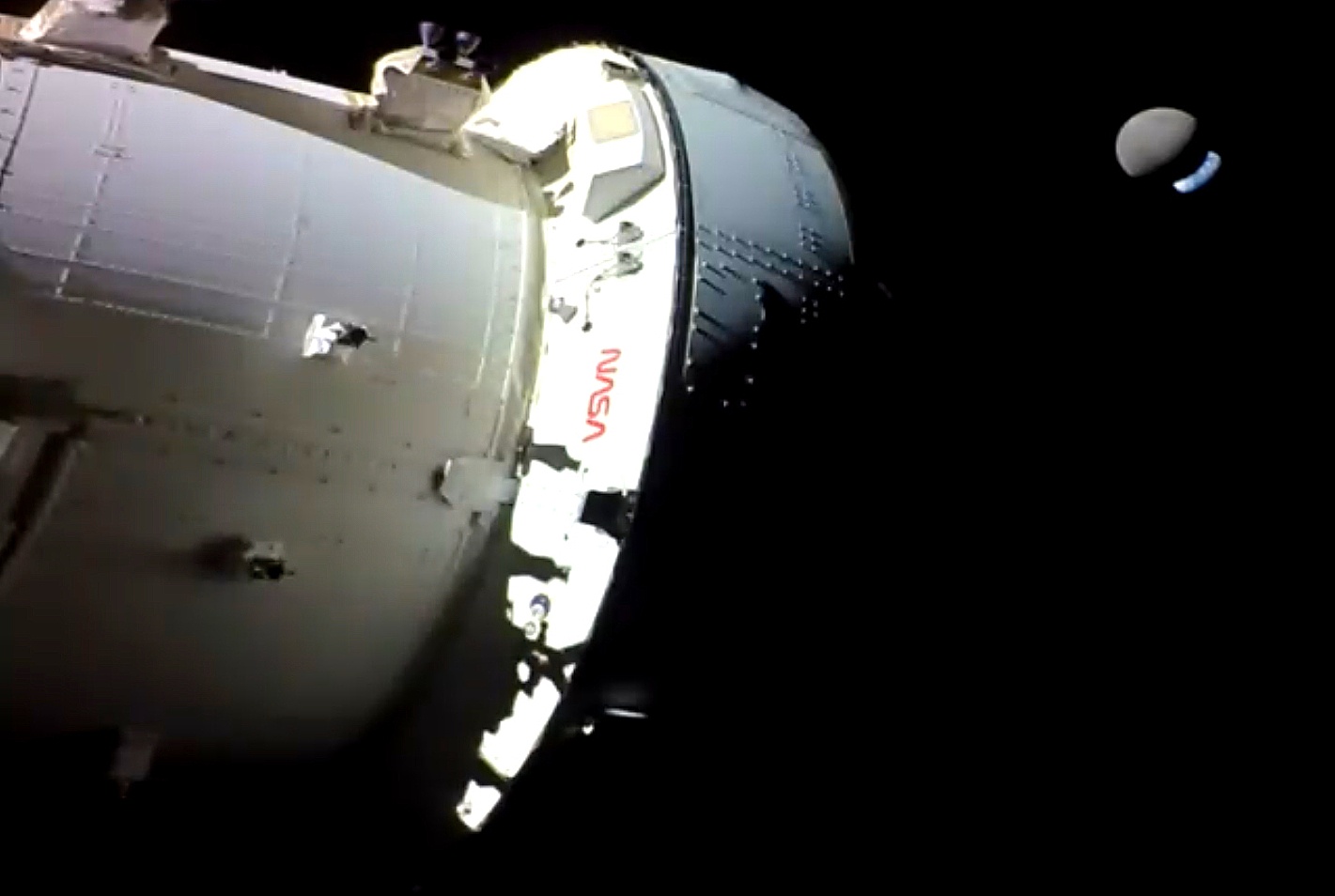Have you ever seen a lunar eclipse of the Earth from the far side of the Moon? Now we have.
On Monday (November 28, 2022) NASA’s Orion spacecraft streamed back live video showing the Earth and Moon right next to each other, followed by a stunning view of the Moon eclipsing the Earth.
What a time to be alive! Image editor Kevin Gill might have said it best:
The video came from one of the cameras mounted on the tip of the one of the solar arrays on Orion’s European Service Module, as it traveled about 64,000 km (39,767 miles) beyond the Moon, or roughly 431,300 km (268,000 miles) away from Earth. The spacecraft is cruising at 1,750 miles per hour.
At the time when the Moon slipped completely in front of Earth, the signal from Orion was lost on the video feed.

Our David Dickinson put together a video of the event:
The cameras are basically souped-up Go-Pro cameras, made hardy enough for space travel.
“Each of Orion’s four solar array wings has a commercial off-the-shelf camera mounted at the tip that has been highly modified for use in space, providing a view of the spacecraft exterior,” said David Melendrez, imagery integration lead for the Orion Program at NASA’s Johnson Space Center in Houston.
Melendrez said the arrays can adjust their position relative to the rest of the spacecraft, which will optimize the collection of sunlight converted into electricity to power Orion. This also allows flight controllers in the Mission Control Center at NASA Johnson to point the cameras at different parts of the spacecraft for inspections and to document its surroundings in space, including the Earth and Moon.
On Saturday Nov. 26, NASA said the Orion spacecraft broke the record for the farthest distance traveled from Earth of a human-rated spacecraft. The record was previously held by Apollo 13 at 248,655 statute miles from Earth.

However, that doesn’t take into account the Apollo 10 lunar module, nicknamed Snoopy (the Command Module was Charlie Brown), which might be still traveling in space. After carrying out a successful lunar orbit and docking procedure, Snoopy was jettisoned and sent into an orbit around the Sun. After 53 years, it’s believed to still be in a heliocentric orbit. A team of UK and international astronomers have been working to try and find it, but so far they haven’t had any luck.

Meanwhile, Orion continues on its uncrewed mission, a shakeout flight to test the spacecraft and ground systems. It launched on the Space Launch System rocket on November 16, and is the first mission in 50 years where a human capable spacecraft is at the Moon. Orion is slated to return to Earth about 25 days after launch, with splashdown currently set for December 11. Using the same exterior cameras as the ones giving us these stunning views today, engineers have been able to assess the exterior or Orion and have deemed it to be in great shape. Therefore, Orion has already been cleared for re-entry.

